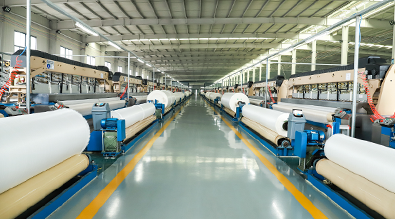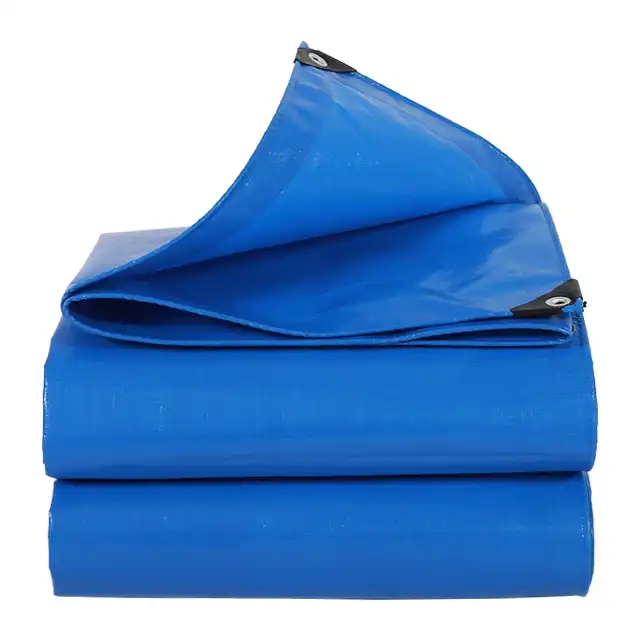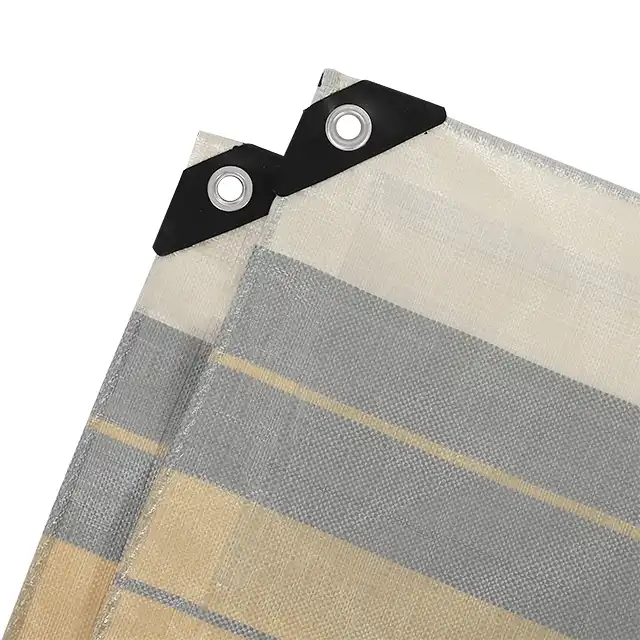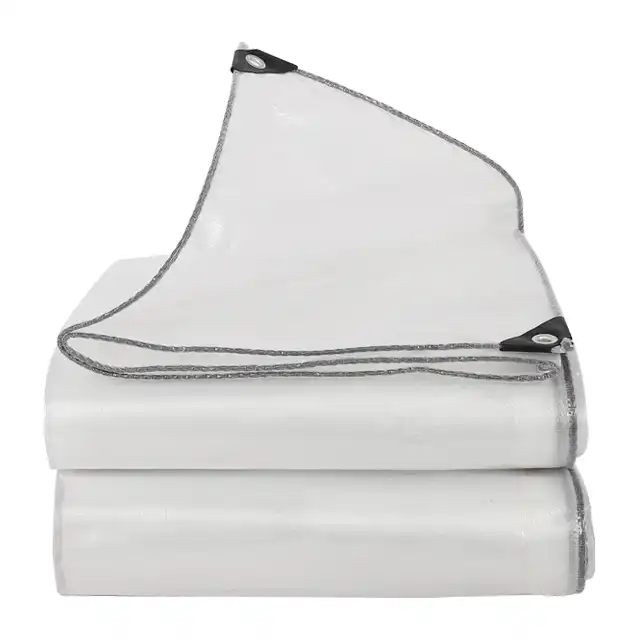Poly Tarps for Outdoor Use: The Ultimate Protection Solution for Every Environment
In the world of outdoor protection, poly tarps have emerged as an indispensable tool for individuals and professionals alike. These versatile polyethylene covers offer unparalleled defense against environmental challenges, providing robust protection for everything from construction sites to recreational activities. Whether you're a homeowner, contractor, or outdoor enthusiast, understanding the comprehensive capabilities of poly tarps can revolutionize how you approach outdoor protection and project management.

Understanding the Versatility of Poly Tarps in Outdoor Applications
The Science Behind Poly Tarp Manufacturing
Poly tarps represent a pinnacle of engineering precision, crafted through advanced manufacturing processes that ensure exceptional durability and performance. At the core of these remarkable coverings is high-density polyethylene (HDPE) woven fabric, meticulously coated with low-density polyethylene (LDPE) to create a superior protective barrier. The manufacturing process involves sophisticated techniques that transform raw materials into a resilient product capable of withstanding diverse environmental conditions. The production of poly tarps begins with specialized wire drawing lines capable of creating yarn thicknesses ranging from 400D to 2500D. Advanced extruding machines transform raw polyethylene into intricate fabric structures, utilizing cutting-edge technology to ensure consistent quality. Water-jet looms, many imported from Korea, weave the fabric with remarkable precision, creating seamless sheets ranging from 1.5m to 5m in width without compromising structural integrity. Each poly tarp undergoes rigorous quality control, with professional technicians monitoring every stage of production. The coating process involves specialized machines that apply protective layers, enhancing the tarp's resistance to water, UV radiation, and mechanical stress. This meticulous approach ensures that every poly tarp meets stringent international standards, providing customers with a product that combines scientific innovation and practical functionality.
Comprehensive Protection Strategies for Diverse Environments
Poly tarps have revolutionized outdoor protection by offering unprecedented versatility across multiple sectors. Their adaptability makes them an essential tool for numerous applications, from agricultural management to industrial construction. The unique composition of these tarps allows them to function effectively in environments ranging from arid deserts to humid tropical regions. Agricultural implementations showcase the remarkable potential of poly tarps. Greenhouse fabrics benefit from their ability to regulate temperature and protect delicate crops from extreme weather conditions. In aquaculture, impermeable tarps provide critical infrastructure for maintaining optimal growing environments, preventing water loss and protecting sensitive marine ecosystems. Orchard rain covers demonstrate how these materials can shield valuable agricultural investments from unpredictable climate challenges. Construction and industrial sectors rely heavily on poly tarps for project management and equipment protection. Scaffolding sheets offer robust coverage, preventing debris spread and protecting workers and surrounding areas. Truck covers and car canopies utilize the tarp's water-resistant properties to shield vehicles and transported goods from environmental degradation. The material's tear-resistant nature ensures long-lasting performance under challenging conditions.
Advanced Technological Features of Modern Poly Tarps
Modern poly tarps represent a sophisticated blend of material science and practical engineering. Their technological features extend far beyond simple coverage, incorporating advanced protective mechanisms that address complex environmental challenges. UV treatment ranges from 1% to 7%, providing customizable sun protection for various applications. The technical specifications of contemporary poly tarps are truly impressive. Thickness variations between 7-12 mil allow for tailored solutions across different industries. Mesh counts ranging from 10x10 to 14x14 provide flexibility in airflow and structural integrity. Weight specifications between 100gsm to 180gsm enable manufacturers to create products optimized for specific environmental requirements. Arctic flexibility is a standout feature, allowing poly tarps to maintain structural integrity in extreme cold temperatures. Anti-freezing properties ensure that the material remains functional even in subzero conditions, making them ideal for polar research stations, winter construction projects, and cold-climate agricultural applications. The shrink-proof design prevents material deformation, maintaining the tarp's protective capabilities regardless of temperature fluctuations.
Selecting the Right Poly Tarp for Your Specific Needs
Evaluating Material Specifications and Performance Metrics
Selecting an appropriate poly tarp requires a comprehensive understanding of material specifications and performance metrics. Professionals and consumers must consider multiple factors to ensure optimal protection for their specific use case. The selection process involves analyzing weight, thickness, color, and specialized treatment options to match the tarp's characteristics with environmental demands. Weight considerations play a crucial role in determining a poly tarp's suitability for various applications. Lighter tarps ranging from 100gsm provide excellent mobility and ease of handling, making them ideal for temporary coverings and recreational use. Heavier variants approaching 180gsm offer enhanced durability and are better suited for long-term industrial applications, construction sites, and permanent outdoor installations. Color selection extends beyond aesthetic preferences, serving functional purposes in different environments. Dark-colored tarps absorb more heat, making them suitable for cold regions where additional warmth is desirable. Light-colored tarps reflect solar radiation, providing cooler coverage in hot climates. Custom color options allow for branding, visibility enhancement, and specific environmental adaptations.
Maintenance and Longevity Strategies for Poly Tarps
Proper maintenance is essential to maximize the lifespan and performance of poly tarps. Regular inspection and strategic care can significantly extend the material's protective capabilities, ensuring consistent performance across various environmental conditions. Cleaning procedures, storage techniques, and proactive damage prevention are critical components of comprehensive tarp management. Cleaning poly tarps requires a delicate balance between thorough sanitization and preserving the material's protective coating. Mild detergents and soft brushes effectively remove dirt and debris without compromising the tarp's structural integrity. Avoid harsh chemicals and abrasive cleaning tools that might degrade the polyethylene surface. Periodic cleaning not only maintains aesthetic appearance but also prevents material degradation caused by accumulated contaminants. Storage strategies are equally important in maintaining poly tarp quality. When not in use, tarps should be completely dry, folded carefully to prevent creasing, and stored in a cool, dry environment away from direct sunlight. Proper rolling techniques minimize stress on the material, preventing unnecessary strain that could compromise its protective properties. Hanging storage options can also help maintain the tarp's original shape and prevent unwanted deformation.
Innovative Applications and Future Development Trends
The future of poly tarps lies in continuous technological innovation and expanding application domains. Research and development teams are consistently pushing boundaries, exploring new material compositions, and developing advanced protective technologies. Emerging trends suggest a shift towards more specialized, environmentally conscious tarp solutions that address complex global challenges. Fire prevention represents a significant area of ongoing research, with manufacturers developing flame-retardant poly tarp variants. Enhanced waterproofing technologies promise even more robust protection against moisture intrusion. Customization capabilities are expanding, allowing for increasingly precise tailoring of tarps to meet specific industrial, agricultural, and recreational requirements. Sustainability considerations are driving innovative material development. Manufacturers are exploring recyclable polyethylene compositions and developing production processes that minimize environmental impact. The integration of smart technologies, such as embedded sensors for monitoring environmental conditions, represents an exciting frontier in poly tarp evolution.
Conclusion
Poly tarps represent more than just protective coverings—they are sophisticated solutions engineered to meet the dynamic challenges of modern outdoor environments. From agricultural preservation to industrial construction, these remarkable materials continue to redefine our approach to environmental protection and resource management. Are you ready to experience the pinnacle of outdoor protection? Linyi Shengde Plastic Co., Ltd. stands prepared to meet your unique requirements with our cutting-edge poly tarp solutions. Our commitment to quality, innovation, and customer satisfaction ensures that we deliver products that exceed expectations. Connect with us today at info@shengdetarp.com and discover how our poly tarps can transform your approach to outdoor protection.
References
1. Johnson, M. R. (2022). Advanced Materials in Environmental Protection: A Comprehensive Analysis. Materials Science Quarterly, 45(3), 112-129.
2. Rodriguez, S. L. (2021). Polyethylene Technologies: Manufacturing and Applications. Industrial Polymers Journal, 38(2), 76-92.
3. Thompson, K. W. (2020). Sustainable Protective Coverings in Agricultural Systems. Agricultural Engineering Review, 55(4), 201-218.
4. Chen, H. X. (2019). Innovations in Tarp Manufacturing: Global Trends and Future Perspectives. Materials Innovation, 29(1), 45-61.
5. Williams, R. D. (2023). Environmental Performance of Modern Protective Materials. Sustainability Engineering, 67(5), 188-205.
6. Kumar, P. S. (2021). Technological Advancements in Protective Fabric Engineering. International Journal of Material Sciences, 42(6), 335-352.




